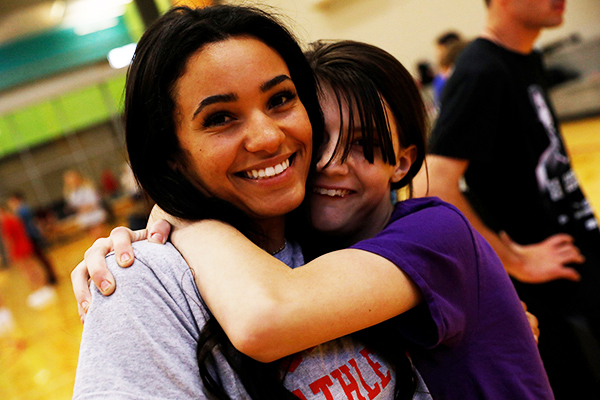
10/21/2025
This year, Bone and Joint Awareness Week held special meaning for SUNY Cortland Distinguished Professor John Foley, a national scholar in physical education who has focused much of his work on individuals with special needs.
That is because Oct. 12-20 — the commemorative week of raising awareness about bone and joint health and disease prevention — also saw the publication of a new global study that Foley coauthored with four others about bone density in Special Olympics athletes.
The article, “Global Variation of Low Bone Mineral Density in Special Olympics Adult Athletes with Intellectual and Developmental Disability - A Cross-sectional Study,” was released in PLOS Global Public Health, a non-profit California-based publisher that aims to drive open science forward with measurable, meaningful change in research publishing, policy and practice.
This study, released on Oct. 7, is one of the largest and most globally inclusive bone health studies ever conducted, highlighting the striking lack of research on the health of people with intellectual and developmental disabilities.
“Drawing on data from over 25,000 athletes worldwide, the study reveals that one in four young adults with intellectual and developmental disabilities have low bone mineral density, a key risk factor for osteoporosis,” the Special Olympics announced about the study.
“When you think about how important bone health is globally, I think the timing of our paper’s release worked out really well,” said Foley, who since 2023 has served on the Special Olympics International Science Advisory Board.
People with intellectual and developmental disabilities worldwide face a high risk of low bone mineral density, a key osteoporosis indicator, yet global data remains limited. The study provides a step forward.
According to the researchers, their work highlights the prevalence rates of low bone mineral density for Special Olympics athletes with intellectual and developmental disabilities across age-groups, sex, and World Health Organization (WHO) regions. The findings highlight regional disparities for low bone mineral density and peak bone mass by WHO Global region, sex and age.
Special Olympics plays a pivotal role in offering opportunities for bone mineral density screenings, physical activity and health education that can positively impact peak bone mass outcomes. Broader public health initiatives and policy changes are necessary to ensure people with intellectual and developmental disabilities receive the support needed to develop and maintain healthy bones throughout their lives.
Through programs like Health Promotion, a discipline of Special Olympics Healthy Athletes, Special Olympics collects data to help inform critical research studies while providing free health screenings and education to address common risk factors for low bone mineral density, like poor nutrition.
Foley’s role on this paper was as one of the conceptualizers of the research, one of the writers and as the corresponding author.
As a physical educator, Foley emphasizes the importance of not only staying active but choosing the types of exercise that most effectively support bone health.
“Physical activity is essential,” Foley said, “but it’s also important to focus on the right kinds of movement. Weight-bearing and resistance exercises — like jumping, running, dancing or lifting weights — help stimulate bone growth and strengthen the skeleton. By contrast, non-weight-bearing activities such as swimming or cycling, while excellent for cardiovascular fitness, don’t provide the same bone-strengthening benefits.”
Although Foley has published more than 100 academic studies to date, he takes special pride in this one.
“Collaborating with the team at Special Olympics has been one of the most rewarding experiences of my career,” said Foley, who joined the university in 2005. “It’s such a highly respected organization, and contributing to its mission was both inspiring and meaningful.”
Foley expressed particular pride in the work being done across the SUNY Cortland community — including by SUNY Cortland alumna Stacey Hengsterman ’93, who now serves as president of Special Olympics New York; by faculty and students who engage with Special Olympians through campus clubs; and by the community-based Adult Fitness Program run by the Physical Education Department.
“There are so many great things happening at SUNY Cortland that make us a real leader in this area,” Foley said.
Select an image to begin a slide show


